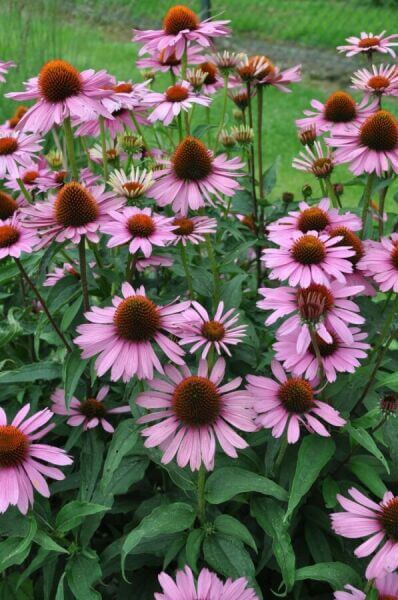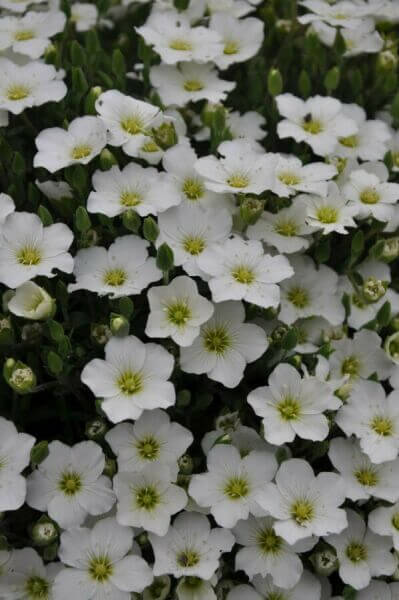Hedge Plants For Community Gardens
Hedge Plants For Community Gardens
Blog Article
Best Hedging Plants For Pollinators
Improve your garden's attraction with lavish hedge varieties such as Yew (Taxus), Thuja, Laurel, Photinia, and Bamboo, commemorated for their structural integrity and ecological advantages.
Yew and Thuja supply evergreen protection and winter durability, while Laurel offers quick development and broad, fragrant leaves.
Photinia includes seasonal beauty with its dynamic red foliage, and Bamboo provides a low-maintenance, peaceful ambiance.
These hedges improve air quality, reduce noise, and develop tranquil, private spaces.
Correct planting, spacing, and maintenance guarantee energetic development and ecological harmony.
Check out how these lavish ranges can elevate your garden's beauty and well-being.
Secret Takeaways
Change Your Garden With Lush Hedge Ranges
- Select Yew for its thick, evergreen growth and unequaled longevity.
- Choose Laurel for its quick development and broad leaves, ensuring quick privacy.
- Choose Photinia for its dynamic seasonal foliage, which turns a striking dark red.
- Use Bamboo for a low-maintenance, winter-hardy hedge with visual appeal.
- Space plants 2-3 per meter and prune frequently for optimum development and health.
Popular Hedge Plants
When changing a garden with lush hedge varieties, it's important to consider popular hedge plants such as Yew, Thuja, Laurel, and Photinia due to their unique characteristics and benefits.
Yew (Taxus) is highly esteemed for its longevity and dense, green growth, making it a prime choice for withstanding landscapes.
Thuja is noted for its evergreen foliage and robust winter resilience.
Photinia adds seasonal vibrancy with red leaves that darken in time, producing dynamic visual appeal.
Laurel provides rapid growth and fragrant, broad leaves, perfect for fast personal privacy.
Furthermore, Bamboo is an outstanding choice for ambiance, offering a low-maintenance, winter-hardy alternative that boosts the garden's visual with its stylish, swaying canes.
These selections deal with a range of horticultural needs and choices.
Benefits of Garden Hedges
Garden hedges use a plethora of advantages, making them an important addition to any landscape. These natural barriers are cost-efficient to execute and offer significant wind protection, boosting air circulation and contributing to noise reduction. The dense foliage of hedges like Thuja and Beech ensures privacy by blocking presence, developing a peaceful and secluded environment.
Hedges likewise play an essential function in microclimate policy, supplying a stable environment that fosters plant development and minimizes temperature level fluctuations. Their detailed leaf structures filter pollutants, enhancing air quality and contributing to a much healthier garden ecosystem.
Furthermore, hedges stand out in noise decrease, absorbing and deflecting acoustic waves to lower ambient sound levels. This dual functionality of offering both visual and acoustic personal privacy improves the general serenity and aesthetic appeal of any garden.
Planting and Maintenance Tips
For a successful hedge, meticulous preparation of the planting area is crucial. Make sure the soil has correct pH and drain to support strong root development.
Area the plants properly for the picked species. Water the hedge frequently during its initial growth phase, adjusting as needed with seasonal changes.
Execute a systematic insect control and disease avoidance method, using chemical or organic treatments when needed. Routinely examine for aphids, mites, and fungal infections.
Apply mulch to keep moisture and suppress weeds. Seasonal pruning promotes thick development and air circulation, essential for plant health.
Following these standards will assist you cultivate a dynamic, properly maintained hedge that boosts the charm of your garden.
Spacing and Trimming Guidelines
Spacing and Cutting Standards
Correct spacing and trimming are crucial for cultivating healthy, aesthetically appealing hedges. Appropriate spacing makes sure each plant gets adequate nutrients, light, and airflow.
Follow these standards for ideal hedge upkeep:
- Spacing: Position hedge plants 2-3 plants per meter to motivate robust development.
- Pruning Methods: Regular pruning is essential for keeping preferred hedge height and shape. Trim brand-new growth in summer and cut down older wood during winter season.
- Seasonal Care: Adjust cutting techniques and schedules according to seasonal requirements to ensure plant health.
- Hedge Height: Routinely monitor and cut to maintain the wanted hedge height and accomplish consistent aesthetic appeals.
Following these actions will ensure your hedge prospers, enhancing both the appeal and performance of your garden.
Picking the Right Hedge
Selecting the Right Hedge
Picking the appropriate hedge involves examining factors such as mature height, foliage density, and ecological strength. Successful hedge plant selection needs understanding each species' development attributes and site-specific adaptability.
For example, Yew (Taxus) provides exceptional durability and dense growth, while Thuja is noteworthy for its winter season strength. In addition, considering maintenance requirements is essential; fast-growing species like Laurel or Privet need routine cutting, whereas low-maintenance alternatives like Bamboo or Ivy might be more suitable for those looking for very little maintenance.
Ecological aspects such as soil type, light schedule, and wetness conditions need to likewise guide the selection process. This cautious method ensures the selected hedges will grow, supplying both functional and aesthetic benefits to the garden landscape.
Delivery and Planting Recommendations
To guarantee your hedge plants grow, they must be provided by specialized couriers and planted quickly upon arrival.
Follow these important steps for successful planting:
- Soil Preparation: Enrich the soil with organic matter to enhance drain and nutrient content.
- Planting Depth: Create a trench two times the width and equivalent to the depth of the root ball.
- Watering Techniques: Water completely after planting, keeping the soil regularly wet but not filled.
- Mulching: Use a layer of mulch to maintain moisture and reduce weeds.
Customer Support and Service
Given the vital function of prompt assistance in horticultural pursuits, our customer assistance group is offered six days a week through telephone, e-mail, and social networks to offer expert advice and promptly deal with any issues. Their devotion to quick action times ensures consumer complete satisfaction by resolving inquiries related to plant health, optimum planting methods, and upkeep schedules.

Availability
----------------------
6 days a week
Within 24 hours
This comprehensive support group, strengthened by a stellar 9.3/ 10 consumer rating, highlights our commitment to boosting the gardening experience for each customer.
Often Asked Questions
For How Long Does It Take for Hedge Plants to Develop?
Hedge plants normally require one to 3 years to end up being fully developed, with the specific duration varying by species and growing conditions.
Efficient care during this crucial period is essential for robust development. Consistent watering, alert weed control, and proper fertilizer application are critical in promoting strong root development.
For instance, fast-growing types website like Laurel might develop faster, while slower-growing ranges such as Yew may take longer. Diligent upkeep speeds up the establishment process, leading to thick and healthy hedges.
What Are the very best Hedge Plants for Personal Privacy?
The concern of the very best hedge plants for personal privacy involves assessing evergreen and deciduous alternatives.
Evergreen hedges like Thuja, Laurel, and Cypress provide year-round coverage, ensuring constant personal privacy.
In contrast, deciduous hedges such as Beech offer seasonal privacy, shedding leaves in chillier months.
Secret maintenance suggestions for personal privacy hedges consist of routine cutting, fertilizing in spring, and correct spacing-- generally 2 to 3 plants per meter.
Furthermore, constant watering and persistent weed elimination are essential for promoting healthy, dense development.
Can Hedge Plants Bring In Wildlife to My Garden?
Yes, hedge plants can bring in wildlife to your garden by supplying essential advantages like shelter, food, and nesting websites, therefore boosting regional biodiversity. For circumstances, yew, holly, and laurel are exceptional for attracting birds, while ivy supports a variety of bugs.
Nevertheless, it is essential to keep in mind that there are some disadvantages, such as increased maintenance to manage pests and regular maintenance. Thoroughly choosing and maintaining hedge ranges can assist stabilize these benefits and drawbacks, ultimately fostering a lively and sustainable ecosystem in your garden.
Exist Any Flowering Hedge Plants Available?
Yes, there are flowering hedge plants available that can boost the charm of your garden.
For example, Elaeagnus, likewise known as Olive Willow, produces aromatic white flowers in the fall, adding a touch of elegance.
Photinia, another popular option, showcases vibrant red leaves that develop into a rich green, producing a dynamic visual impact throughout the seasons.
To ensure these plants prosper, it's essential to practice appropriate pruning techniques and seasonal maintenance, such as trimming brand-new development in the summertime and cutting down in the winter.
These procedures will help maintain the health and visual appeal of your blooming hedges.
How Do I Avoid Pests in My Hedge Plants?
To prevent bugs in hedge plants, employ natural insect control approaches and maintain appropriate hedge care. Present advantageous pests like ladybugs, which take advantage of damaging pests, to produce a well balanced environment.
Regularly examine your hedges for indications of problem and quickly eliminate any affected parts to prevent the spread. Guarantee the health of your hedges by applying well balanced fertilizers and supplying adequate water.
Utilize mulching to keep soil moisture and appropriate spacing to minimize plant tension and promote robust development. These practices jointly assist in reducing insect issues and keeping a healthy hedge.
Conclusion
In essence, choosing the best hedge ranges such as Yew, Thuja, and Laurel can change any garden into a relaxing sanctuary. These plants offer year-round plant, improve aesthetic appeal, and offer useful advantages like sound decrease and wind security.
Appropriate planting methods, accurate spacing, consistent watering, and seasonal cutting are vital for optimum development.
Reputable delivery services and expert customer assistance guarantee a seamless experience from purchase to planting, making it easier than ever to raise your outdoor space.
Garden hedges offer a wide variety of benefits, making them a valuable addition to any landscape. These natural barriers are affordable to implement and supply substantial wind security, enhancing air blood circulation and contributing to noise reduction. The thick foliage of hedges like Thuja and Beech ensures personal privacy by obstructing presence, producing a secluded and tranquil environment.

Pruning Strategies: Routine pruning is necessary for keeping wanted hedge height and shape. Cut brand-new growth in summertime and cut back older wood during winter.
Report this page